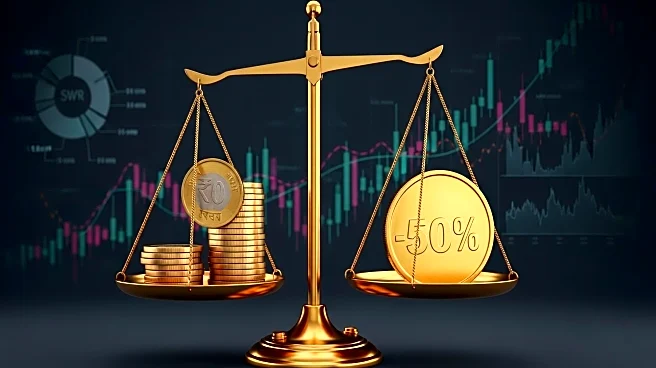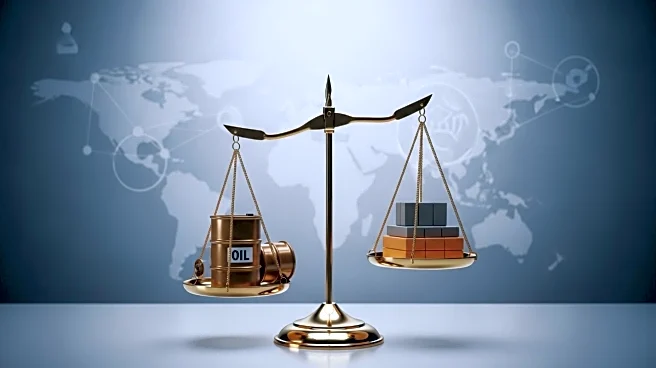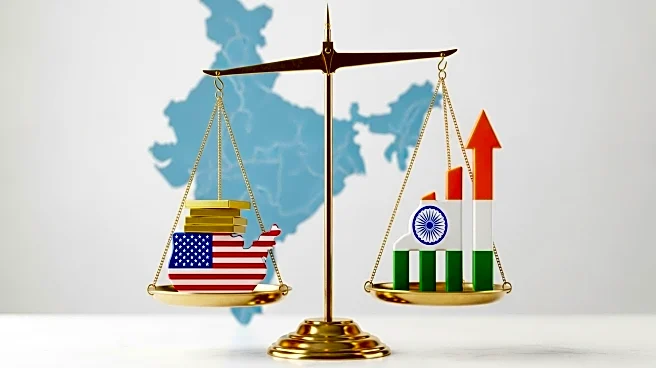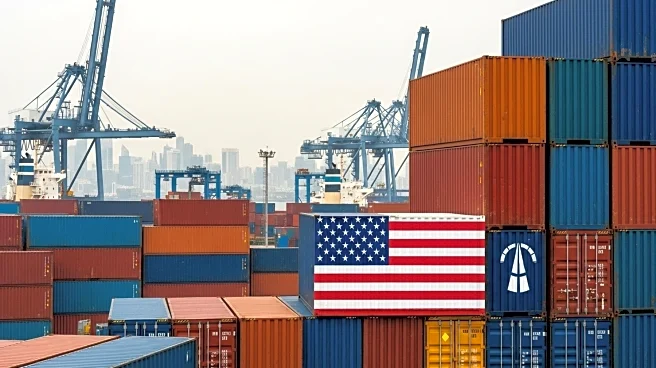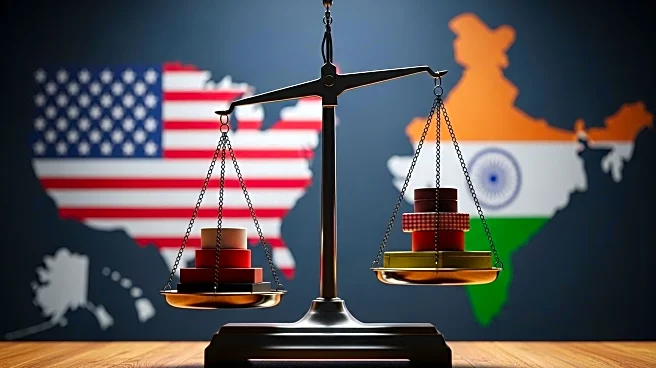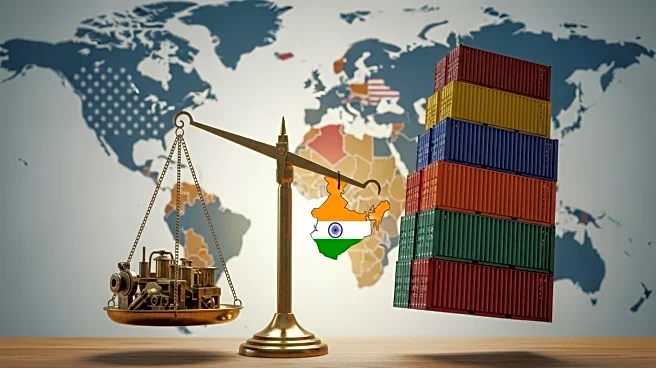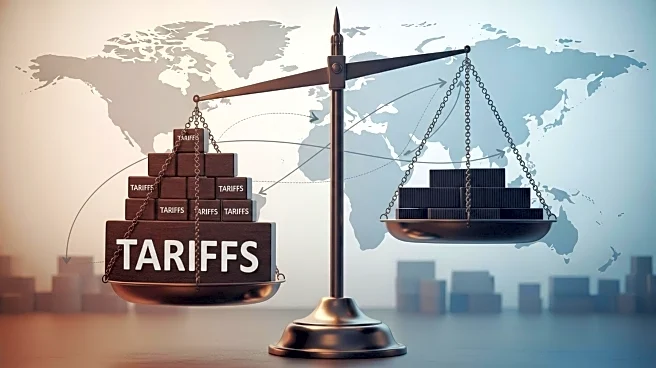What is the story about?
What's Happening?
President Trump has implemented a 50% tariff on most U.S. imports from India, following through on his threat to penalize India for its continued purchase of discounted Russian oil. This tariff, which adds an additional 25% duty on top of a previous 25% imposed earlier, is significantly higher than tariffs on other countries such as China and South Korea. The U.S. is India's largest export market, valued at $86.5 billion annually, and the new tariffs cover approximately two-thirds of these shipments. Economists predict that the tariffs could reduce India's GDP growth by up to one percentage point this fiscal year, with potential job losses in sectors heavily reliant on U.S. demand.
Why It's Important?
The tariffs pose a significant threat to India's economy, particularly in sectors such as textiles, jewelry, seafood, and leather, which could see exports to the U.S. drop by as much as 70%. This could lead to a substantial loss of market share to competitors like Vietnam, Bangladesh, and Mexico. The impact on employment is also a concern, as India's jobless rate is already rising, and a decrease in exports could exacerbate this issue. The tariffs may also affect India's strategic relationship with Russia, as India continues to rely on Russian oil despite narrowing discounts.
What's Next?
India may need to explore alternative markets and strategies to mitigate the impact of the tariffs. This could include increasing trade with other countries or negotiating tariff reductions with the U.S. However, the immediate focus will likely be on managing the economic fallout and protecting jobs in affected sectors. Additionally, India may continue to strengthen its trade settlement systems to reduce reliance on U.S. currency reserves.
Beyond the Headlines
The tariffs could lead to long-term shifts in global trade dynamics, with India potentially seeking to diversify its energy sources and reduce dependency on Russian oil. This situation also highlights the geopolitical complexities of trade relationships and the potential for economic policies to influence international alliances.
AI Generated Content
Do you find this article useful?
